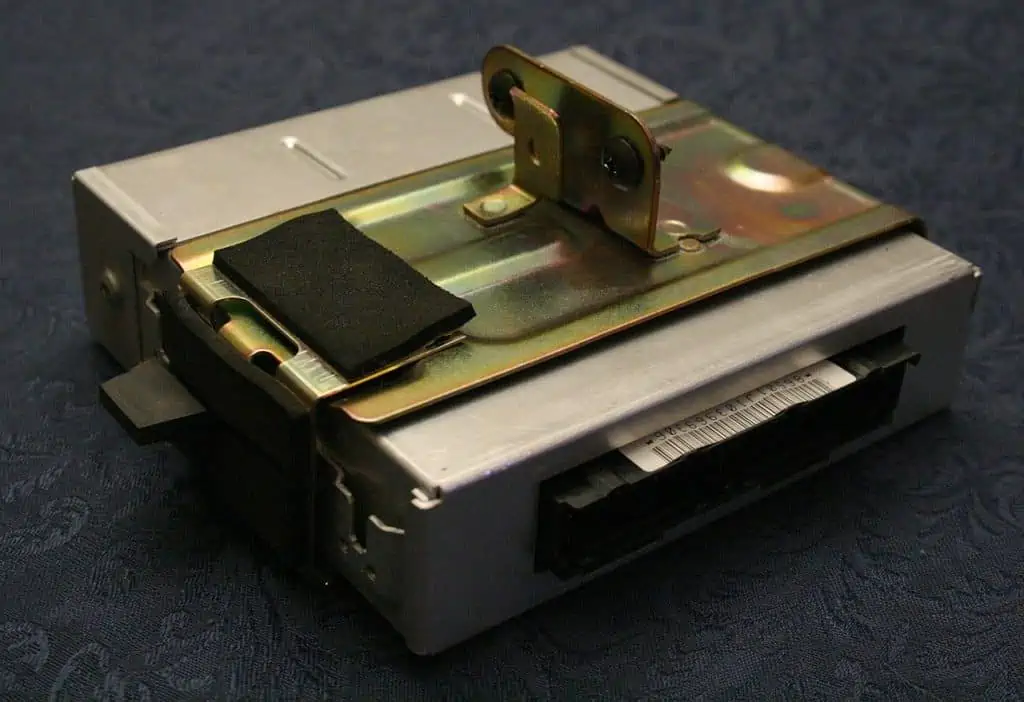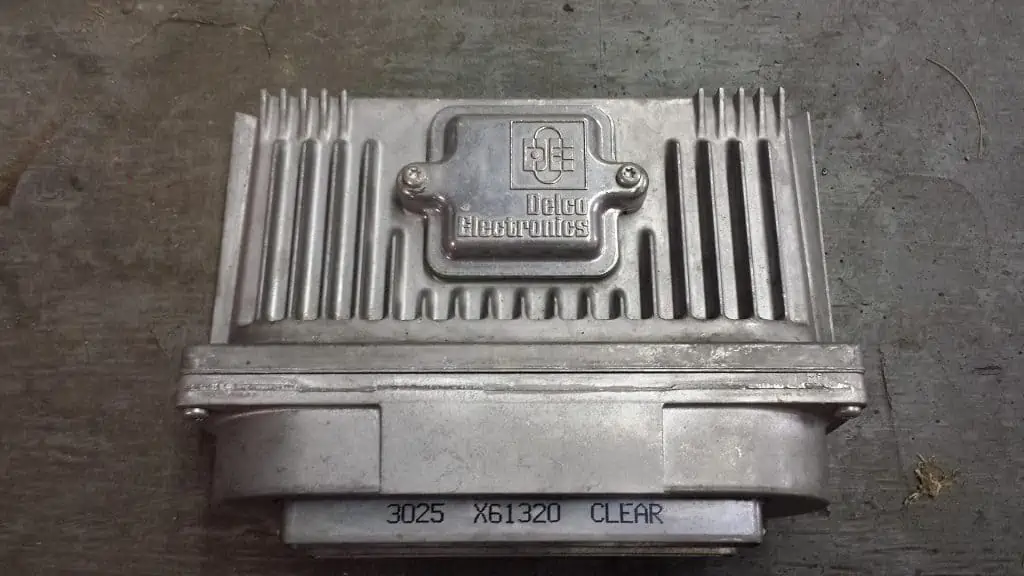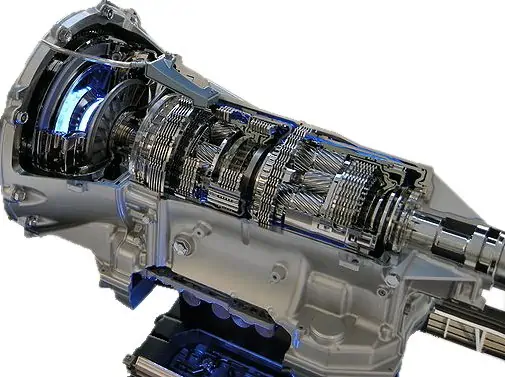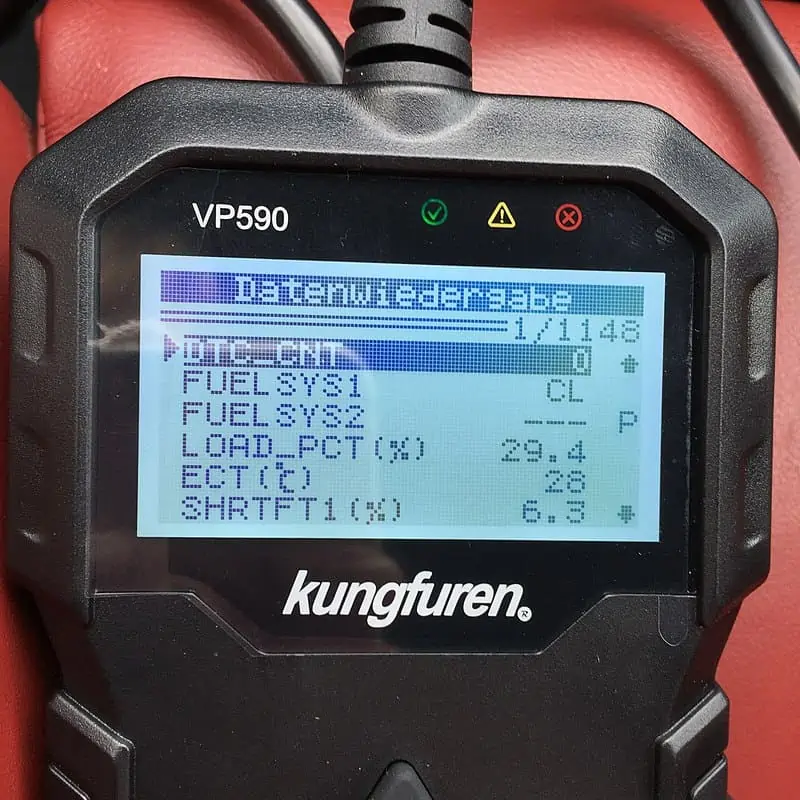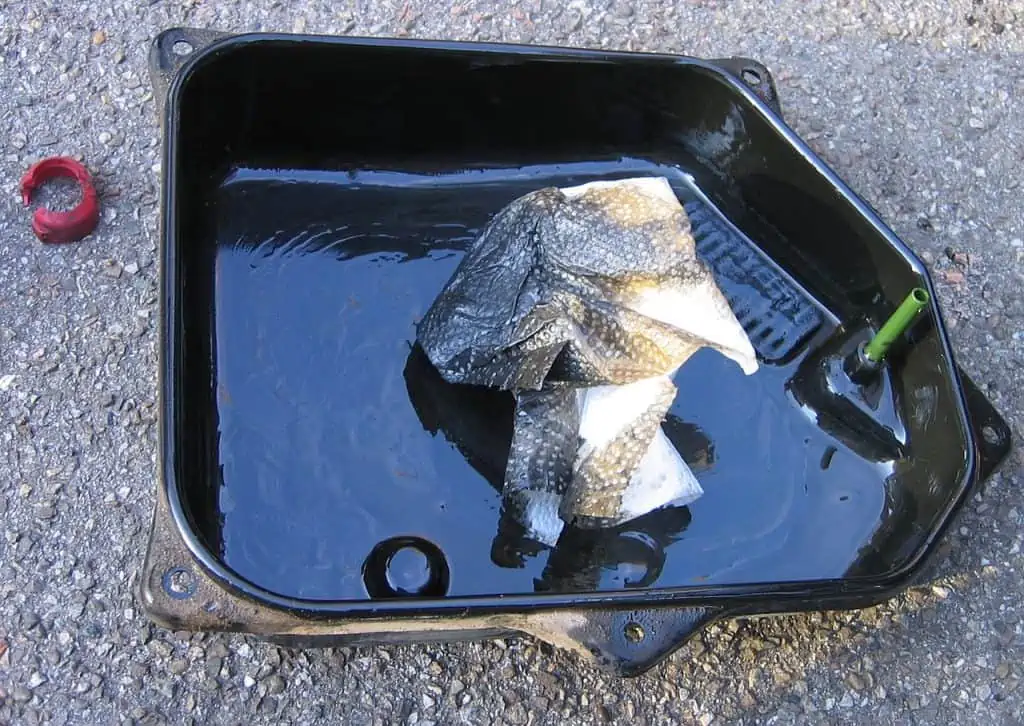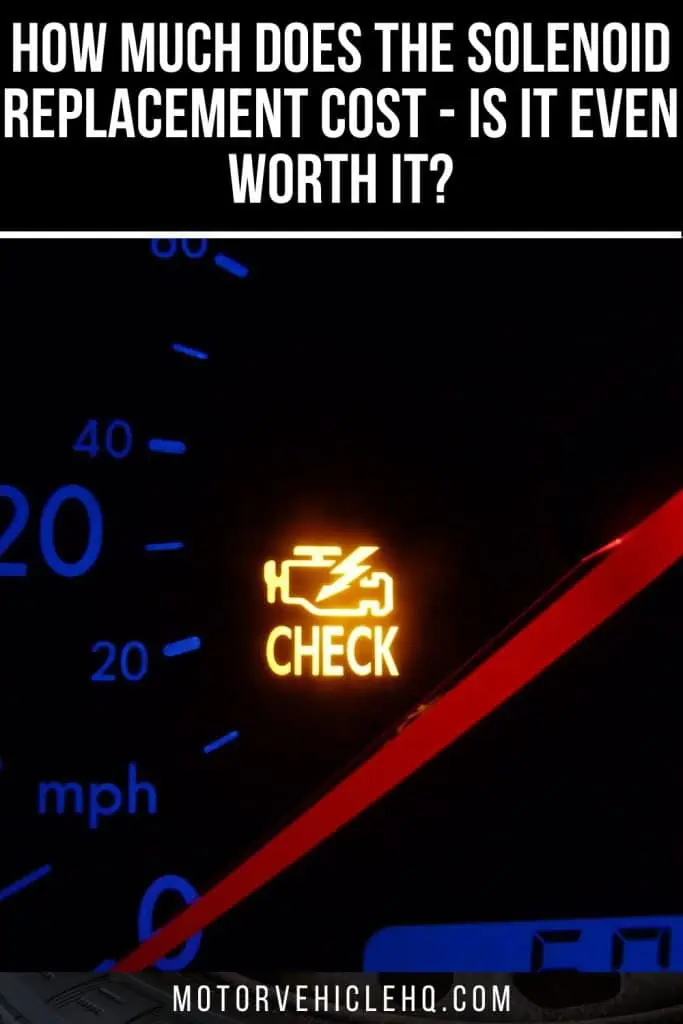Unexpectedly, the engine is not one of the most complex components of any vehicle. That distinction, in my opinion, belongs to the gearbox, which is directly responsible for converting the many explosions produced by your engine into useful power.
An enormous labyrinth of valves, gears, pumps, clutches, shafts, and other components can be found when you open a gearbox. This is why replacing a solenoid may be quite challenging.
After all, it is the transmission or “shift” solenoid that is primarily in charge of regulating the circulation of hydraulically pressured transmission fluid. This substance sometimes referred to as “gearbox oil,” is necessary for the operation of your transmission.
Your car’s gearbox wouldn’t only be unable to shift and change gears without its fluids. Additionally, it is also missing its primary source of cooling and lubrication.
The solenoid is frequently brought up by the technician whenever you bring a car to the shop with any gearbox-related gremlins. But how is it possible for your shift solenoid to malfunction?
Most importantly, how much would replacing a transmission solenoid cost and involve? Here is all you need to know about a solenoid replacement if you’re prepared to get your vehicle operating once more.
Transmission Solenoid: What Is It?
Why not talk about the component in question while we’re attempting to understand what a solenoid replacement is? So, what exactly is a transmission or shift solenoid?
The transmission solenoid’s main function, which we previously said, is to regulate the flow of transmission fluid. An electro-hydraulic or electromechanical valve, the solenoid itself may be maintained open or closed as needed.
An electronic control unit (ECU) by Specious / CC BY-SA 3.0. Based on information from numerous sensors distributed throughout the vehicle’s powertrain, the ECU (engine control unit) and TCM (transmission control module) may choose the best moment and gearing to shift into.
Since your transmission has numerous distinct solenoids operating simultaneously, some technicians also refer to it as a “solenoid pack.” The (already stated) shift solenoid, lockup solenoid, and transmission control solenoid are the three most significant varieties.
Regardless, they all respond to commands from the computer brain in your car and open and close, enabling the transmission fluid to circulate as necessary.
More specifically, the ECU (engine control unit) and the TCM (transmission control module) may decide the ideal instant and gearing to shift into depending on data from multiple sensors dispersed throughout the car’s powertrain.
Usually, these computers and sensors determine how fast your vehicle is moving. providing electrical impulses to the solenoids to enable gearbox fluid flow after that.
The only gearboxes that use transmission solenoids are automated ones. This pressurized gearbox fluid is essential to a transmission’s operation.
Your car’s solenoids control the flow of hydraulically pressured fluid, which is what engages and disengages the different transmission components.
Examples may include its clutches, brake bands, and gear sets. Your gearbox won’t work without that pressure.
What Is a Transmission Solenoid’s Working Mechanism?
However, a solenoid repair is necessary for more than simply your gearbox’s functionality. The transmission fluid pressure may be incorrect if the solenoid is broken, which can also affect performance.
Harsh and abrupt gear shifts would result from the transmission solenoid letting in too much pressure. Additionally, if the transmission fluid pressure is too low, there won’t be adequate cooling or lubrication.
Your gearbox might experience inconsistent and strange shifting as a result. Not to mention fast degrading, overheating, and breaking down too soon. The solenoids allow you to instantly change the pressure of your transmission fluid.
A microcontroller processes all signals and data before opening and shutting a solenoid, accordingly. Consequently, you may be sure that gears can be changed easily, quietly, and comfortably.
Here is a detailed explanation of how they operate:
- A variety of vehicle and engine speed sensors measure your car’s speed and RPMs as you drive.
- These sensors collect data, which is then transmitted to the ECU or TCM for analysis. Once extrapolated, it can be used to choose when it’s best to upshift or downshift.
- The results of their analysis are converted into 12V electric signals that are sent to the transmission solenoids to cause the transmission to shift up or down per the analysis.
- A spring-loaded plunger (which opens and closes) with a wire-wrapped body is a feature of solenoids.
- The plunger will open as a result of an electrical charge surge sent through the wire coil by those electric signals.
- Consequently, allowing gearbox fluid to flow into the valve body and apply pressure to whatever transmission components are required to effect a gear change.
A transmission control module (TCM) by Mgiardina09 / CC BY-SA 3.0. Your car’s solenoids are directly connected to the TCM and ECU, thus any issues it has will have been reported.
Shift Solenoids: Where are They Located In a Car?
Your automatic transmission’s valve body contains the transmission shift solenoids. They are built into the valve body and depending on the car model, you may be able to access them without removing the valve body in some cases.
The shift solenoids are located inside the valve body of your transmission. It is because of this that shift solenoid symptoms can be difficult to diagnose and resolve. To get to the shift solenoids, you or a mechanic will frequently need to disassemble the valve body.
If you choose a professional repair, doing so would likely increase the labor costs because it can take some time to get to the shift solenoids. However, not every car is subject to this.
You might be able to locate the shift solenoids without removing the valve body, depending on the make and model of your car. They are frequently found on or near the valve body housing.
What Symptoms Should You Look Out for Before Contemplating a Solenoid Replacement?
As we previously hinted, the transmission solenoids are packaged together. Solenoids come in a variety of forms, and they each serve a unique purpose for facilitating fluid flow control.
The solenoid pack is typically located in the valve body or the transmission control module. The latter is a labyrinthine assembly with channels for fluid flow throughout the transmission.
In other words, if this part fails and needs to be replaced, the gearbox will endure excessive wear and tear in addition to having poor shifts and bad or erratic performance.
On the plus side, when they are just a hair’s breadth from passing away, they can exhibit very distinct symptoms. You might be able to facilitate a solenoid replacement before it’s too late by paying close attention to it.
When this happens, the transmission will typically exhibit strange shifting patterns and behavior, which you should be able to identify as soon as you begin to drive.
1. Erratic and Random Shifting Action
Hydraulic (transmission) fluid pressure is probably out of whack when the solenoids start to fail. As a result, the numerous moving components of your gearbox, such as the clutches, gear sets, brake bands, and so on, lack the necessary force to operate.
This causes the gearbox in your vehicle to malfunction, which is evident in the way it drives and changes ratios.
Examples include missing or skipping gears when moving up or down in the gearbox. Additionally, you can see that the gearbox alternates between the same gears frequently.
Another possibility is that the gearbox will keep you in one gear and won’t let you change it no matter what you do. If the RPM is excessively low or high, it may shift violently and aggressively in other places.
2. Not Being Able to Downshift the Gears
Different transmission solenoids indeed experience different failure types. They occasionally fail to open or close at the appropriate moment. Alternately, only some of the solenoids may be completely inoperable out of the entire pack.
The transmission solenoid may also experience a stage of failure when it is permanently locked open or closed because the plunger won’t retract or push open.
Manual transmission by Typhoon / CC BY-SA 3.0. If your transmission makes any strange noises, the shift solenoid might be broken.
The transmission fluid cannot enter the valve body because of a blocked solenoid. In effect, this results in a pressure decrease, making it impossible for your gearbox to go into the proper gear.
You’ll note that even when you’re braking and slowing down, your engine keeps turning in an upward direction. Other times, the transmission may refuse to change gears and keep you neutral.
3. Delayed and Very Slow Shifts
To ensure that a gearbox can change gears smoothly and gradually, very strict tolerances are required for transmission fluid pressure. This is especially true with automatics, which are what the great majority of vehicle purchasers choose.
You might anticipate slow or delayed shifts if the solenoid is unable to regulate and manage the fluid pressure adequately.
It would take forever to just shift into a higher or lower gear and may keep you stranded in a particular gear for far too long. Additionally, you could occasionally get the feeling that the transmission is locked in neutral and won’t let you advance.
This is seen in your car’s poor performance and sluggish acceleration, as well as abrupt or lurching gear changes.
4. The Transmission Light or the Check Engine Light Is On
The solenoids are directly connected to the ECU and TCM of your vehicle, so any problems it encounters will have been recorded.
A sequence of warning lights will then flash on your dashboard when errors are recorded as error codes. These would most frequently be the transmission warning light or the Check Engine Light (CEL).
Just keep in mind that a variety of issues with the engine and gearbox might cause these warning lights to come on. When it comes to CEL, it may indicate anything as simple as a loose gas filler cap or it might indicate an emissions-related problem.
You must connect an OBD scanner to know for sure what caused the CEL to arise in the first place. Later, we’ll talk more about that.
5. The Vehicle Enters “Limp Home” Mode
When the vehicle detects warning lights or other issues, it may instruct you to drive in “limp home” mode. Most cars include this safety system to keep you from overworking the powerplant, which is already weakened.
It also covers problems with the engine or transmission, such as a set of broken gearbox solenoids.
When in limp home mode, your car will only go into second or third gear, reducing its speed and use. Depending on your car, it can also stop you from revving any higher than 2,500 to 3,000RPM.
This keeps the vehicle from being fully immobilized because you can still drive, although very slowly. It’s a terrific time to visit your neighborhood workshop and get it examined.
6. Gear Stuck In Neutral
Stuck in neutral is one of the most typical signs of a faulty shift solenoid. When you try to shift gears because of this, the vehicle won’t move, which may be quite annoying.
You can try a few other things in the interim to try to solve the problem. Make sure your car is in the park and that the parking brake is on before continuing. You may also try using the gear shift on the column to manually change gears.
Automatic transmission by Silverxxx / CC BY-SA 3.0. The transmission shift solenoids are located inside the valve body of your automatic transmission. Depending on the vehicle model, you might be able to access them without taking the valve body off because they are incorporated inside the valve body.
7. Weird Sounds Emanating from the Transmission
The shift solenoid may malfunction if you hear any unusual noises emanating from your transmission. You could hear whining, whining, or grinding noises when the vehicle is in gear. These noises may be an indication that the shift solenoid needs to be fixed or replaced because it is not operating correctly.
It’s crucial to take your vehicle to a professional to be diagnosed and fixed if you hear any odd noises coming from your transmission.
8. Car Skips Some Gears
Skipping gears is another sign of a malfunctioning shift solenoid. This can occur when the vehicle attempts to shift into a higher gear but the shift solenoid isn’t operating properly; as a result, the vehicle shifts directly into the next gear.
A sign that the shift solenoid is malfunctioning is when you are driving in third gear and want to change into fourth gear, but the vehicle instead switches into fifth gear.
Skipping gears may be risky since it can reduce the vehicle’s power and speed, which is particularly harmful when driving on the highway.
Why Does the Transmission Shift Solenoid Fail?
Many factors can damage the transmission shift solenoid.
1. Unclean Transmission Fluid
Transmission fluid that is contaminated is one of the most frequent reasons for a malfunctioning shift solenoid. Over time, transmission fluid can become contaminated, and if it isn’t replaced, the shift solenoid may stop working.
The shift solenoid may become stuck in one position and prevent the gearbox from shifting gears properly if the transmission fluid gets too filthy. It’s also crucial to remember that if your vehicle has an automatic gearbox, you really must change the transmission fluid regularly.
2. The Transmission Slips
A sliding gearbox is another frequent reason for a malfunctioning shift solenoid. This may occur if the transmission fluid is low or the clutch is not engaging correctly.
Due to its inability to keep the vehicle in one gear, a sliding gearbox might result in the shift solenoid failing. When you try to shift gears, the vehicle will shake or lurch if the gearbox is slipping.
It’s crucial to take your vehicle to a technician if it’s slipping so they can identify and fix the issue.
3. Solenoid Wiring Defects
The wires that connect to the shift solenoid may deteriorate or wear over time. They won’t be able to change gears properly if the wires aren’t functioning properly since they won’t be able to communicate the right signal to the shift solenoid. It’s crucial to have the wires changed as soon as you can if you discover any damage to them.
4. The Normal Wear and Tear
The solenoid itself is quite unlikely to experience wear and tear. The transmission shift solenoid, however, might be harmed by the deterioration of related parts.
For instance, the valve body that regulates the flow of the transmission fluid may become worn out. As a result, the shift solenoid will experience reduced hydraulic pressure and finally stop working.
The check engine light by Wikiuser100000 / CC BY-SA 3.0. When solenoid faults are identified as error codes, your dashboard will then flash a series of warning lights. These would typically be the Check Engine Light or the Transmission Warning Light.
What Codes Do Solenoid Replacement OBD Errors Throw?
As we have explained, you may put in an OBD scanner or reader to get trouble codes that the vehicle has thrown your way. These are acquired and stored by the ECU and TCM, and they are very useful for diagnostics and pinpointing a particular problem.
This gives you the ability to examine the error codes recorded. The typical diagnostic error codes for a bad transmission solenoid are listed below.
These error codes are not manufacturer-specific but rather general. The people at OBD2Pros, where you can find out more about each diagnostic trouble code (DTC), provided this list. If your error codes don’t match these, you should be able to find the solution with a fast Google search.
- Shift Solenoid A: Code P0750
- Shift Solenoid A – Stuck Solenoid @ ON: Code P0752
- Transmission 3-4 Shift Solenoid – Relay Circuits: Code P0753
- Shift Solenoid A – Intermittent fault: Code P0754
- Shift Solenoid B: Code P0755
- AW4 Shift Sol B (2-3) – Functional Failure: Code P0756
- Shift Solenoid B – Stuck Solenoid @ ON: Code P0757
- Shift Solenoid B – Electrical: Code P0758
- Shift Solenoid B – Intermittent fault: Code P0759
- Shift Solenoid C: Code P0760
- Shift Solenoid C – Performance or Stuck Off: Code P0761
- Shift Solenoid C – Stuck Solenoid @ ON: Code P0762
- Shift Solenoid C – Electrical: Code P0763
- Shift Solenoid C – Intermittent fault: Code P0764
- Shift Solenoid D: Code P0765
- Shift Solenoid D – Performance or Stuck Off: Code P0766
- Shift Solenoid D – Stuck Solenoid @ ON: Code P0767
- Shift Solenoid D – Electrical: Code P0768
- Shift Solenoid D – Interm: Code P0769
- Shift Solenoid E: Code P0770
- Shift Solenoid E – Performance or Stuck Off: Code P0771
- Shift Solenoid E – Stuck Solenoid @ ON: Code P0772
- Shift Solenoid E – Electrical: Code P0773
- Shift Solenoid E – Intermittent fault: Code P0774
OBD scanner by KarleHorn / CC BY 3.0. To decipher the issue codes your car has given you, you can install an OBD scanner or reader. These codes are collected and kept by the TCM and ECU and are particularly helpful for diagnosing and locating a specific issue.
What Is the Cost of a Solenoid Replacement?
Now, let’s tackle the challenging topic of how much a replacement transmission solenoid will set you back. Despite its diminutive size, it plays a crucial role in the functioning, effectiveness, and dependability of any automatic gearbox.
The good news is that one of the less expensive fixes for transmission-related problems is a solenoid replacement. Of course, that is relative, and the actual total might differ.
Your car’s make, model, and gearbox will all play a significant role in this. It could take longer and need more work to replace the solenoids hidden inside more sophisticated and complicated gearboxes.
Simply said, this will result in steadily rising solenoid replacement prices. On average, though, you can probably anticipate a final price of between $150 and $400. This includes both labor and components.
To explain it in more detail, changing a transmission solenoid at the neighborhood mechanic will take between two and four hours. Typically, a workshop would bill workers for $60 to $120 per hour.
The solenoid itself, which can be purchased for as little as $15, pales in comparison to this. Or, for the more expensive solenoids, around $100. Please keep in mind that the prices shown above are per unit.
If many of your solenoids malfunction simultaneously and need to be replaced, the cost will increase somewhat, particularly for the parts. Between $50 to $300 can be spent on a pack of solenoids.
Rather than only replacing one solenoid, the mechanic will now need to work a little bit longer hours. A solenoid pack replacement will cost you between $250 and $600 in total.
What Is the Cost of Solenoid Replacement and Why Is It Pricey?
You’ll also need to account for more difficult transmissions to fix. As a result, you can also witness a massive increase in the final cost of a solenoid replacement to over $700. With premium, heavy-duty, or high-performance vehicles, the price is even closer to $1,000.
The high cost of solenoid replacement is ultimately influenced by many variables, including:
- The location: In certain autos, the valve body can be left in place while the solenoids are changed. Others, however, need the valve body extensively disassembled to access the solenoids. Additionally, doing so typically requires you to remove your car’s whole gearbox unit, which adds to the expense. That will depend on the particular car, once more.
- The pack: In certain cars, you can get away with replacing only one broken solenoid while leaving the remainder in place. However, if only one of the solenoids malfunctions, certain vehicles need you to replace the complete solenoid pack. Additionally, some vehicles incorporate solenoids within the valve body. As a result, you’ll need to spend more than $1,000 to replace the complete valve body.
- The other parts: It is usually advised that you consider other parts while changing the transmission solenoids. Typically, they involve replacing the filter as well as cleansing and changing the transmission fluid. Mind you, the fluid’s condition is crucial. The replacement solenoids may break or prematurely wear out if the transmission fluid is polluted or dirty.
Changing the dirty transmission fluid by Hans Haase / CC BY-SA 4.0. The most obvious way to increase the longevity of your solenoid and the rest of the transmission is to change the transmission fluid frequently. As a gearbox age, mud and sludge will accumulate and cause the oil to become dirty.
Can You Self-Replace a Transmission Control Solenoid?
A transmission control solenoid replacement might be challenging. It is frequently advised that you hire a specialist to perform the replacement.
There are a few things you should be aware of before beginning if you decide to do it on your own because you feel bold.
Find the solenoid first, then proceed. Usually, it is close to the transmission. Once you’ve located it, you’ll have to take out the bolts holding it in place.
When removing the bolts, exercise extreme caution to avoid harming the solenoid. After removing the bolts, you may remove the solenoid and swap it out with a new one.
When installing the replacement solenoid, watch out for overtightening the bolts. The solenoid may become harmed as a result and stop working.
After installing the new solenoid, you should be good to go. Before reassembling the transmission and starting your car, make sure to check everything twice.
Is It Possible to Drive with a Malfunctioning Shift Solenoid?
When you’re dealing with a transmission-related problem, it might be intimidating. Particularly if you’re not familiar with how an automatic transmission works. This might be an issue, especially if your vehicle still appears to be drivable. It deceives you into thinking you are secure.
You should speak with a workshop as soon as you can if you’re having problems with your transmission. If you can still drive your vehicle, this will be simpler. Don’t try to utilize your vehicle as you normally would for commuting.
Because a transmission problem can swiftly worsen into a catastrophic transmission breakdown, it is suggested that you do this. By then, a straightforward solenoid replacement or even a transmission fluid change might no longer be able to solve your problem. An automatic gearbox is highly fragile by its very nature.
How Can You Minimize Frequent Solenoid Replacement?
So far, we may conclude that a transmission solenoid’s tiny size does not necessarily translate into its being an easy component to repair.
This necessitates the disassembly of a substantial portion of the gearbox before we can even reach the solenoid, which raises the cost of solenoid replacement.
Therefore, it would be ideal if we could prevent the requirement for a solenoid replacement altogether.
Unfortunately, transmission solenoids have a limited lifespan. Most people estimate that the transmission solenoid will last 1 to 3 years if they use their vehicle often.
However, this projection is quite pessimistic. It is difficult to predict when the solenoid is certain to fail. So, it stands to reason that paying close attention to the symptoms we listed before is a useful cue to get them corrected.
Every transmission solenoid eventually experiences severe wear and tear. It simply requires your best efforts to take care of it, which may help to increase its longevity.
Changing the transmission fluid regularly is the most apparent approach to extending the lifespan of your solenoid and the rest of the transmission. Gearbox oil will get soiled as it ages due to the buildup of muck and sludge.
The solenoid in your gearbox may become damaged if you let this old transmission fluid flow in it. It can lead to problems like floating debris, dirt, and sludge blocking the solenoids.
Push-button-based electronic shift selector by Comyu / CC BY-SA 3.0. Too much pressure being applied to the transmission solenoid would cause abrupt and harsh gear shifts. Additionally, there won’t be enough cooling or lubrication if the transmission fluid pressure is too low.
The plungers can stick or fail to open and close correctly as a result. Additionally, sluggish, viscous fluids are more difficult to circulate, making the solenoids work harder to pressurize them and wear them down.
Premature Solenoid Replacement Prevention Tips
Here are some more preventative measures in addition to routine transmission fluid replacement.
- Keep the maintenance schedule for the transmission: There are several parts in the gearbox that require servicing on occasion. The transmission fluid filter is the most popular. In addition to the fluid itself, as we just mentioned, there is also that. To forcibly remove any impurities or silt from the system, a fluid flush is also a good idea.
- Use synthetic Transmission fluid: You may also think about switching out the regular transmission fluid in your vehicle for a synthetic solution. Heat is a major factor in the breakdown of transmission fluid, leaving them worn or burnt out. Because of this, they are unable to lubricate and cool as well. Synthetic transmission fluids, which are more heat resistant, don’t have this problem.
- Invest in a secondary transmission cooler: Excessive heat is the major cause of transmission destruction. In addition to valves, solenoids, electrics, and many other components, it can harm seals. Purchasing a secondary, auxiliary transmission cooler can be beneficial if you frequently travel to hotter locations. If you do this, your gearbox’s working temperature may be significantly lowered.
- Drive moderately: Using a more moderate driving style is a fantastic additional technique to keep your transmission from getting wrecked. Driving aggressively will increase the strain on both the engine and the gearbox. Therefore, instead of constantly pushing your vehicle to its redline, use a softer touch while using the gas pedal and let it shift gears more gently.
The Conclusion
This would be an excellent time to conclude our solenoid replacement instruction. Even though these particular solenoids are rather few, they are crucial to the operation of your gearbox.
You might easily have your driving pleasure and vehicle performance compromised by faulty solenoids. Not to mention the extra strain you’re placing on the gearbox, which might eventually cause the entire system to break.
Since they are so interconnected, solenoids aren’t exactly inexpensive to replace. To even get to it, the gearbox must frequently be removed in large portions. Nevertheless, considering that a new transmission would cost you thousands of dollars, the price is worth it.
In contrast, maintaining the solenoids is significantly simpler. You only need to be diligent to ensure that the transmission fluids are replaced regularly.

The check engine light by Wikiuser100000 / CC BY-SA 3.0. It comes on in case the shift solenoid malfunctions.

Jim Wicks is the founder of MotorVehicleHQ. With over two decades of experience in the automotive industry and a degree in Automotive Technology, Jim is a certified car expert who has worked in various roles ranging from a mechanic, car dealership manager, to a racing car driver. He has owned more than 20 cars over the past 15 years. Ask him about any vehicle you see on the road and he can tell you the make, model and year. He loves the aesthetics of all things cars, and keeps his vehicles in pristine condition.
In his free time, Jim enjoys getting his hands dirty under the hood of a classic car or taking long drives along the country roads. His favorite car? A 1967 Shelby GT500, a true classic that, according to Jim, “represents the pure essence of American muscle.”
